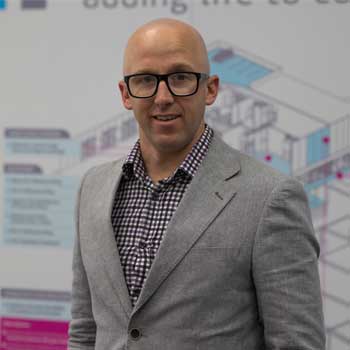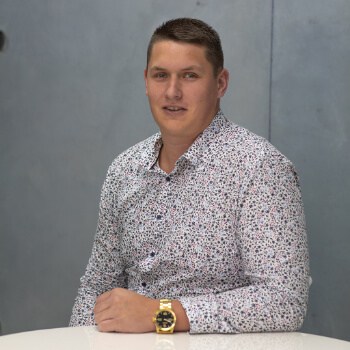It’s Henry’s turn to join Doug in the podcast studio – in person this time! Doug shares an R&D update from the lab. Henry tells about tangling with Melbourne traffic; and his conversations about BASE-TECT waterproofing. To wrap up, there’s a quick mention of some of the charitable work MARKHAM encourages.
Doug & Henry Share Their Week – R&D, Melbourne Traffic, Basement Waterproofing, And ‘CONQOR Your Health’

Invisible Strength
Doug & Henry Share Their Week – R&D, Melbourne Traffic, Basement Waterproofing, And ‘CONQOR Your Health’
/
RSS Feed
Doug & Henry Share Their Week – R&D, Melbourne Traffic, Basement Waterproofing, And ‘CONQOR Your Health’
GWT equipment https://www.germanninstruments.com/water-permeability-test-gwt/
Cyclone Gabrielle https://en.wikipedia.org/wiki/Cyclone_Gabrielle
World Down Syndrome Day https://www.worlddownsyndromeday.org/
View the Transcript
DOUG: Right! Well, welcome to the third episode of Friday podcasts at MARKHAM. Laike’s away on annual leave today. So, new face on board, Henry Mitchell.
HENRY: Thanks, Doug. I think Laike’s up snorkelling at the Poor Knights [Islands] actually. Taking a bit of R&R and getting away from work.
DOUG: Yes. That’s beautiful spot up there. No doubt he’s enjoying it.
HENRY: We always encourage our staff and team here to pick and book the next holiday. So there’s always something to look forward to.
DOUG: Definitely!
HENRY: …working at MARKHAM, one of the good parts about it.
DOUG: Yes, yes, 100%. There’s never even much resistance. Work hard, play hard. It’s good to live by. Anyway, we will be trying to get more people from MARKHAM involved on this podcast. So, Henry’s jumped on the phone a couple times. He’s here in real life today. We’ll see who we get on next week. But what we always want to do is answer the question, What’s one thing this week that… or what’s one thing in general you wish your clients or whoever, anyone knew about concrete? So yes, let’s kick off of that, and then shall we have a look at some… any highlights of the week as well, to finish off.
HENRY: Yes. Sounds good. It’s good, mate.
DOUG: You got anything in terms of what you wish people knew about concrete? Now you caught me on the hop back there. But you’ve been doing some R&D stuff at the back, haven’t you? Anything about that?
DOUG: Yes. Yes, we have, looking at some abrasion testing. So comparing a controlled concrete to treated concrete. So a variety of different treatments. Obviously our AQURON range; we’re always wanting to make sure that’s keeping up, you know, with the different concretes that people are using these days. So that’s been interesting. So some real life tests out the back there, out in the yard, which is always good, to get that real life.
Also, we’re just keeping on getting our database full of permeability testing as well. So that was a GWT. Probably what I wish, one thing in that regard I wish people knew about concrete, is that it’s a very variable material. So when you’re doing testing and things with it, you’ve got to keep repeating and you’ve got to do a high volume of testing to get a… you know, to observe a pattern, observe a trend.
So you’ve got… even just practically thinking about the cement, aggregate, sand, the amount of water you put in, how long it’s mixed. There’s so many things to think about just from the mix alone. And you know, little wee changes you make do affect results. You know, it’s real important to have that consistency there.
HENRY: And then a lot of the testing we do in the lab, obviously. Is there a difference between the testing done in the lab and done in real life? I don’t actually know the answer, I’m just asking that… is there much testing done on real life concrete or real life structures, that sort of thing? Yes. I mean, it’s not practical to do that all the time.
DOUG: No there is… it is limited to what you can do. Obviously the lab is set up so you can control as much of those variables as possible. Yes. But what happens is you end up controlling them too much and they end up being better than they are in the real world.
So even just a basic thing like compression cylinders, when you cast them in the lab, it’s a nice temperature, it’s consistent. They go into a water bath for the 7 days or 28 days, whenever you’re crushing them. Yes. And so they’re getting the best hydration, best cure possible. Whereas if you take that out on a slab, out into the open or even an indoor slab, that might have air blowing across it, it might be hot, might be cold, whatever, both are as bad as each other in terms of drying concrete out – and you get you get different results.
HENRY: Yes. Yes ok, interesting.
DOUG: As far as on site, it’s more around looking at the permeability of the concrete. That’s the test we like to use the most,…
HENRY: Yes.
DOUG:…the GWT rig, which can be, you know, bolted on and tested before and after. It shows a really quick indication of the effect we’re having on the concrete.
HENRY: How does that work? So you bolt it on and then it and that test the permeability by pressure…
DOUG: Yes. Yes it does.
HENRY: …by pumping water onto the concrete?
DOUG: Correct. Yes. So there’s a … it puts, I think it’s like a 60mm diameter area of pressure onto the concrete. You can vary the pressure depending on what you want. We normally do to ten metres [head of pressure]. That’s a fairly sort of average water pressure. If you think about a reservoir or tank or… if you’re wanting to sort of accelerate the effects of driving rain, that sort of thing.
HENRY: Yes.
DOUG: So yes, that’s what we normally do. There’s many other… there’s a few other non-destructive testing, you know, around looking at the resistivity of concrete.
HENRY: Yes.
DOUG: The only challenge with that is that the hydrogels do conduct electricity. Or do conduct charges, can give you a false rating.
HENRY: Yes, OK.
DOUG: So yes, GWT is really what we use the most.
HENRY: But yes, that’s… A quick R&D update I guess.
DOUG: Yes. No, there’s plenty more to talk about on that topic, another time. Yes. What’s the highlight of your week?
HENRY: Oh, just actually catching up mostly this week. I’ve had some pretty good chats. I spent three days in Melbourne last week,…
DOUG: Nice!
HENRY:…with Alex Portelli, our design guy out of Sydney, which is fun.
DOUG: Very cool! Someone was saying Melbourne’s been real busy. Is it busier than you’ve noticed it before?
HENRY: The traffic’s nuts. Drives your head in!
DOUG: You don’t cope with traffic?
HENRY: No I don’t cope with traffic.
DOUG: It’s not my favourite thing.
HENRY: I came out of the office on the Wednesday night and took a wrong turn twice. So that put me back – for about 2.5 hours actually.
DOUG: Yes.
HENRY: Yes. And I knew exactly what I was doing. I was coming out… I was supposed to go, down the middle one and I went down the left one. And yes, then I had to go about 25 minutes over the wrong way. Anyway! But, yes, Brisbane, I mean Melbourne, we had some flipping good meetings. Basically, build-to-rent is actually keeping the market going down there at the moment.
DOUG: OK, yes.
HENRY: But quite interesting. It shows there is confidence out there. The guys are putting… investors put a lot of money forward to build these apartments and these build-to-rent apartment buildings. So we were talking about basement waterproofing.
DOUG: Oh yes.
HENRY: And how we can help out there and…
DOUG: Are you finding that everyone’s getting their head around the new standard? Or is it more that they’re adopting it rather than having to, you know…
HENRY: Yes there’s not… well they are. I mean waterproofing consultants, they follow the standard. Yes. The BS8102 standard, that’s a British standard, pretty closely anyway, because obviously New Zealand and Australia haven’t got a waterproofing standard. But it’ll come, it won’t be far away. But they’ve got to relate back to the British standard, guys that do waterproofing.
Yes. And that’s the cool part about the new BASE-TECT system. We’ve got the membrane, the physical membrane that it has at all complies with all those standards. So yes, we can help out. But yes, there’s a bit going on… the markets is… I mean, there’s a lot of guys hurting out there, but I reckon… I don’t know, gut feeling… even over the last four weeks there’s been heaps of inquiries and heaps of big projects are starting to go get cranking. And obviously we’re seeing stuff here at MARKHAM because we work from design to the installation. We see stuff as early as possible and it’s well early. So a lot of those guys out there hurting now, potentially there is light at the end of the tunnel. Yes. But there’s guys saying June-August, this stuff’s going to just start cranking.
DOUG: Yes. No, that’s interesting because it’s a similar vibe we’re getting from the mining market as well. So everyone’s… lots of projects sort of getting ready to go and feasibility studies, that type of thing. So yes. Like you say, some people are busy, some people are finding it a bit tougher.
But yes, I think if people can just hang in, hang on for a few more months and it’s going to get busy. It has to.
HENRY: Yes, yes. No, it’s… there’s heaps going on. And then obviously, the other thing I was just thinking about as the old cyclone up in Brissie. We’ve got a little office up in Bundaberg.
We’ve got guys on the ground in Brisbane. So hopefully all keeping safe out there. But yes, it brings back a few memories. Two years ago old Cyclone Gabrielle smashed the whole east coast of the North Island.
DOUG: Yes, it does.
HENRY: Hope everyone’s staying safe. It hasn’t actually hit yet, has it?
DOUG: No, no, it’s kind of threatening a bit, but no, we’re definitely thinking of all our contacts in that area. Stay safe and do what you need to, to prepare and look after your loved ones. Going back to Cyclone Gabrielle. You’ve had a bit to do with the Rapid Relief Team. That’s something you volunteer for outside of work. You want to give us 30 seconds on that, and then we’ll wrap up.
HENRY: Yes. Oh, yes, that’s a charity I’m part of. Do a lot for the first responders, firies, police, all those guys, keep them fed and watered in a big disaster like that. But also just thinking, like, even, here at MARKHAM, we’ve got our whole ‘CONQOR Your Health’ thing, team, we’ve got a team here that we try to… obviously we’ve got to do our day job and work, but it’s one of the things we do here is also give back and try to do something outside of work. So each month we do a fitness challenge. Last month we did a big team bike ride out around Napier. The Sydney team got out on their bikes. We’ve given to the rescue helicopter. We got World Down Syndrome Day coming up. So we’ve got a committee of team members, about seven of us here at MARKHAM, and we get on once a month and we’ve sort of got a budget and work out where we can give to, people in need and that sort of thing.
DOUG: Yes. No. It’s awesome. Now that’s good. Thanks for jumping on. And yes, we’ll see you all again in a week or so.
HENRY: Sweet as! Over
Want to Contribute?
Feedback on our podcasts? Suggestions for future topics? Looking for more information on topics we’ve discussed? Send us a message – we’ll be in touch within a day or two.
More about MARKHAM
MARKHAM are dedicated to providing innovations for concrete and construction. Focusing on concrete waterproofing solutions, penetrating concrete sealers and durability treatments for concrete.
Podcast Categories
Latest Episodes

Doug & Laike Share Their Week – Western Australia, Christchurch, and a Focus on Low Carbon Concrete
Laike and Doug wrap up their week again with a 10-minute chat. They’ve each been

Doug & Henry Share Their Week – R&D, Melbourne Traffic, Basement Waterproofing, And ‘CONQOR Your Health’
It’s Henry’s turn to join Doug in the podcast studio – in person this time!

Doug & Laike Share Their Week – Seychelles, Readymix Plants, And A Bike Ride
Once again Doug and Laike sit down for a 10 minute recap from the week.
invisible strength podcast
The whole MARKHAM team is pleased to present you with our podcast series, INVISIBLE STRENGTH. In this series of interviews, we’ll walk through the science and challenges of concrete durability, what goes wrong in the field – and the advanced methods available to restore and enhance service life to concrete construction.
INVISIBLE STRENGTH reflects a number of factors in concrete construction and durability. When things go wrong, the evidence can become very visible indeed. However, when all is going well, there’s nothing particular to be seen!
MARKHAM’s concrete treatments, too, are invisible once completed – and the result is the long internal, invisible durability of the concrete.
So join us as we explore the unseen world inside concrete – why it matters, and how it can be protected!

